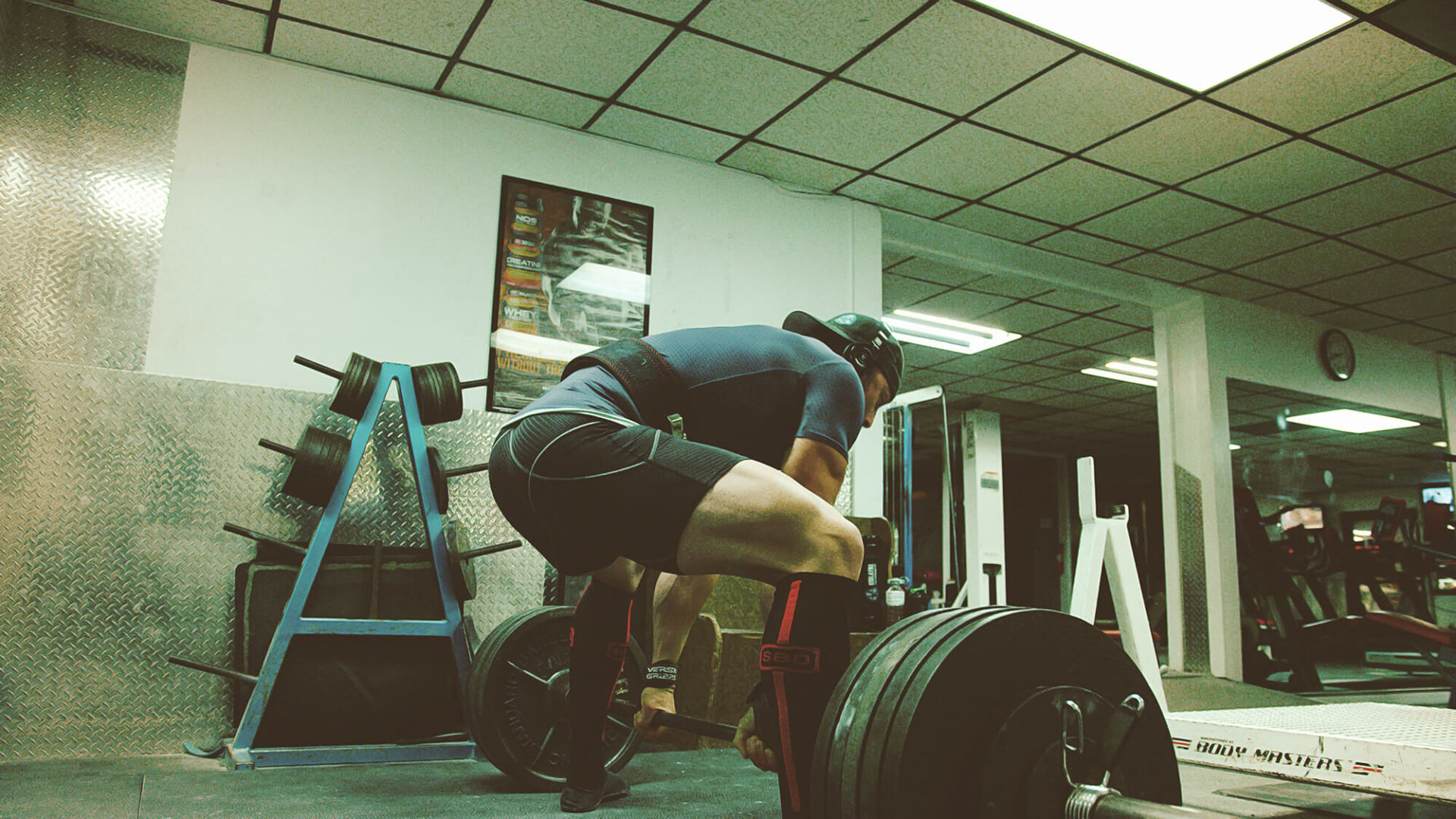When it comes to bodybuilding or weight training, there are a key set of training variables such as reps, sets and rest periods that we should all aim to optimize.
For decades, the “best” length for the rest period between sets (within a workout) has been debated by researchers, bodybuilders and every other type of fitness enthusiast imaginable. Some people will recommend shorter rest with a more metabolic or “pump”-like stimulus works best, whereas others will propose longer rest periods to allow for optimal performance in each set.
But within the research, there is certainly no clear-cut answer. So, is there really an optimal rest period for muscle growth and, if so, what is it? Let’s find out…
Strength vs Hypertrophy – Understand The Difference?
There have been numerous studies investigating the effects of rest periods, with some focusing more on strength and others focusing on a mix of strength and hypertrophy.
Appreciating the difference between strength and hypertrophy is a very important factor for you to understand going forward. In fact, if you don’t fully understand this distinctive difference it is easy to come to the wrong conclusion, or, take away the wrong conclusion from certain studies.
Although strength adaptations and muscle growth are strongly correlated, the daily differences in a strength training or hypertrophy plan can be different and often require different programming styles.
For example, to maximize strength adaptations over the long term, an extended rest period with a lower rep and heavy loads, close to your 1 rep-max, is required. Additionally, to maximize performance on these lifts, a longer rest period is required (e.g. 60 seconds vs 180 seconds) [1][2].
Based on this and the known correlation between strength progression and muscle growth, one would quickly assume that if longer rest periods and heavier loads are best for strength, they must be better for hypertrophy.
Although this connection makes sense in theory, the answer still depends and isn’t conclusive when it comes to hypertrophy. For example, some research shows that shorter rest periods can lead to similar adaptations for muscle growth during long-term studies. Additionally, shorter rest periods may also provide some specific biological or metabolic benefits depending on your goal [3][4].
Let’s see what the research has to say…
The Research on Rest Periods
Several studies have investigated the effects of rest periods on muscle hypertrophy. Here’s a summary of the research:
One study compared 2 vs 5 minute rest periods in well-trained men and found no difference. However, 2 minutes may be slightly higher than what most would class as a short rest period (in my view, short is around 45-90 seconds) [5].
Another study was conducted in 12 untrained individuals. They used either 60 or 150 seconds (2.5 minutes) and found slightly greater growth in the arms and significantly greater growth in the legs for the longer 2.5 minute rest periods [6].
While these 2 studies would suggest the importance of extended rest periods, another 12 week study actually found no difference in muscle cross sectional area and strength, despite the short rest period group performing around 13% total training volume [4].
Most recently, well known research Dr. Brad Schoenfeld showed a positive effect for longer rest periods. The 8 week study performed with 22 well trained participants compared the effects of long vs short rest periods on an 8 – 12 rep bodybuilding training regime [7].
When comparing pre and post measurements, they saw greater strength improvements in bench and squat 1 rep max for long vs short. They also found a significant improvement in muscle thickness (measured via ultrasound imaging) for the quad and a non-significant trend for the tricep. Both groups saw the same improvements in muscular endurance.
The bottom line seems to suggest longer rest periods are better, but, is this the final answer and does it apply to a real world setting? Not so fast, consider these points first.
Research Limitations and Real World Considerations
While it may seem that longer rest periods seem as good, if not better, for muscle growth in research, the application in a real world routine may not be a straight crossover.
A primary issue is that the studies testing rest period length match the amount of training sets and volume. While this is an important variable in research, it may have less application in a real life program. For example, if a shorter rest period could allow you to finish your training in half the time period compared to longer rest periods, how much more volume could you perform in a 60 minute session?
Research has shown that training frequency and volume are also key factors in muscle growth; to some extent, more volume and frequency tend to lead to greater growth (up to a threshold, of course) [8][9].
Therefore, if shorter rest periods would allow for 50% more volume or greater frequency (as you could potentially do double the sets or an extra muscle group in the time you’ve saved by using short rests) how would this impact your progress over a 12 week period?
For now, we don’t have studies considering all these real world factors or the effects of time. If you are not limited by time and can spend hours in the gym, then sure, a longer rest period may be best. But, if you only have 3, 60 minute sessions per week, could the extra training volume and frequency obtained from shorter rest periods outweigh the negatives?
Based on the research showing an importance of training frequency, if you can train a muscle twice per week vs once it may. For fat loss, it would also be hard to argue that performing more volume, burning a lot more calories and potentially boosting your metabolism to a greater extent from more metabolic session isn’t beneficial.
For now we don’t have a definitive answer. As always, further research is needed which considers and compares the real world application, accommodating for changes in frequency and volume. Until then, there are clearly benefits for shorter rest periods if you can’t train every day, trying to lose fat or have less than 45-60 minutes for a workout.
The Benefits of Short Rest Periods
- Greater metabolic stress and cell swelling, an important factor in hypertrophy [10].
- Increased Lactate levels [11].
- Improved muscular endurance and buffering / recovery capacity [12].
- Likely allows for greater volume within a period of time.
- May allow for more frequency as you can train more muscle groups within a session.
- Increased calorie burn and therefore, maybe greater long-term fat loss [13].
- Increased cardiovascular adaptations.
- Increased capillary and mitochondrial density. [14]
- Greater increase in anabolic hormones after the workout (although its importance may not be significant) [15].
The Benefits of Longer Rest Periods
- Greater output and performance [16][17].
- Greater training volume if you are controlling sets (i.e. 5 sets) [17].
- Allows for greater ATP replenishment [18].
- Greater recruitment of type 2 muscle fibers [19].
- Greater long-term muscle growth in controlled research [5][7].
- Greater long-term improvements in strength and power [5][7].
Picking the Best Rest Period For You and Your Goals
As discussed above, when applying the research into a real world periodized program and considering other variables such as time, training volume, frequency and fat loss, the answer depends.
As with your training, specificity is probably the most important consideration when picking rest periods. For those with plenty of time to workout, who can train most days without constraints and obtain sufficient volume and frequency for every muscle, a longer rest period may be best.
Additionally, if you want to focus on a blend of hypertrophy and strength, then longer rest periods may be the best route, or, at least make up the bulk of your workouts or volume.
However, for those who are trying to lose fat, have a limited time per session or those who can only train 2-3 times per week, the benefits of shorter rest periods allowing for more volume and training frequency per week could be significant. While I’m not suggesting you perform all your sets or workouts with short rests, it may be worth periodizing both short and long rest periods.
If you have a pure fat loss goal for the next 6 weeks, you may wish to perform the first movement or exercise (which is normally a compound movement) with longer rest periods and maximize performance or strength. Following this, you could then spend the second half or remaining part of the workout with slightly less rest, allowing you to burn more calories and get more training volume, which can be important to retain muscle when dieting.
You could also alternate your sessions as part of a periodized plan.
For example, if you train each muscle group twice per week, you could perform one session with longer rest and a focus on strength, maximal performance and heavier work which is closer to your 1 rep max. Then, the second session could be performed with shorter rest periods, allowing for more volume and other acute metabolic or cellular benefits such as cell swelling, which may not occur to a significant degree with longer rest and low rep work.
There are also considerations within a workout, based on the exercise and muscle group. In short, isolation movements or smaller muscle group exercises such as biceps curls probably require less recovery on a cellular and systemic (whole body) level when compared to a compound movement for a large muscle group such as squats.
Finally, there are also likely to be some individual differences based on your physiology, muscle fiber type, metabolism and fitness. For some, shorter rest periods can be used successfully with only a small decrease in performance or reps per set. However, for others (normally those more accustomed to strength/power work), it can lead to large decreases in performance.
Therefore, you should always consider your own individual body and, unless you are a professional athlete or bodybuilder, to some extent, what you enjoy the most and know you will stick with over the long term.
References
- http://www.ncbi.nlm.nih.gov/pmc/articles/PMC3899651/
- http://www.ncbi.nlm.nih.gov/pubmed/3667019
- http://www.ncbi.nlm.nih.gov/pubmed/19691365
- http://www.ncbi.nlm.nih.gov/pubmed/20543741
- http://www.ncbi.nlm.nih.gov/pubmed/16095405
- http://www.ncbi.nlm.nih.gov/pubmed/19077743
- http://www.ncbi.nlm.nih.gov/pubmed/26605807
- http://www.ncbi.nlm.nih.gov/pubmed/20300012
- http://www.ncbi.nlm.nih.gov/pubmed/25932981
- http://www.ncbi.nlm.nih.gov/pubmed/3667019
- http://www.ncbi.nlm.nih.gov/pubmed/3667019
- http://www.ncbi.nlm.nih.gov/pubmed/6401405
- http://www.ncbi.nlm.nih.gov/pmc/articles/PMC3551736/
- https://www.researchgate.net/publication/264126764_The_Effect_of_Inter-Set_Rest_Intervals_on_Resistance_Exercise-Induced_Muscle_Hypertrophy
- http://www.ncbi.nlm.nih.gov/pubmed/1860749
- http://www.ncbi.nlm.nih.gov/pubmed/19077743
- http://www.ncbi.nlm.nih.gov/pubmed/16686570
- http://journals.lww.com/nsca-jscr/Abstract/1997/05000/A_Comparison_of_Three_Different_Rest_Intervals.11.aspx
- http://www.ncbi.nlm.nih.gov/pubmed/17194236

